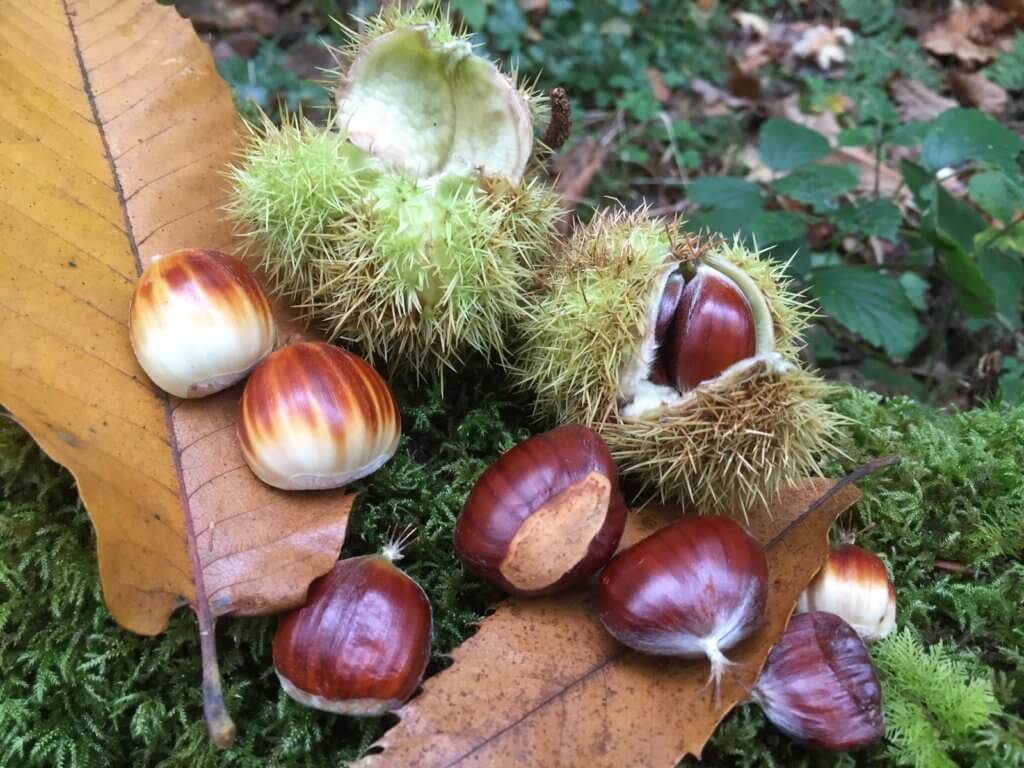
This is not a native tree but it has been established in Britain for around 2,000 years and the nuts have long been exploited by humans. They only ripen well in some years and, even then, only on a sub-set of the mature trees. Climate change may help as the tree is native to warmer areas, including southern Europe and North Africa, though these nuts were found in Devon in mid-October after one of the most dismal summers for many years.
I can’t resist eating the nuts raw if I find them on a walk, though they have a slightly dry and bitter taste. It’s best to scrape away the fibrous coating after removing the glossy-brown outer shell or it can feel like trying to chew through a mouthful of fluff. If they are still in their cases then gloves (or a stout boot) will be needed to release them – the prickles have been superbly well-honed by evolution, making them almost impossible to handle.
Traditionally, of course, chestnuts are roasted over an open fire, with holes pricked into the shell to help the heating process and release the hot gas that otherwise builds up inside. It has been suggested (by Richard Mabey I think) that you can gauge when they are ready by leaving one or two with un-pricked shells. When these explode, the rest are ready to eat. In my experience, this rarely works perfectly, though it’s a great way of keeping children entertained, or a room full of drowsy Christmas visitors on their toes.
[registration_form]
I’ll try your cooking technique on Christmas Eve! Trees in Oxfordshire seem to have shed most of their crop, but sadly very few anywhere close to ripe. Why does that happen?
By which I meant, if it’s early in the season and the nuts haven’t ripened, why doesn’t the tree persevere for a few more weeks?
Jacks – you do ask tricky questions! I guess it’s probably to do with climate and the trees have only so much energy to put into them. Often there are some ripe ones but others from the same tree are still mostly white, so perhaps they give up on some to devote the energy they have to the others. But in a nutshell, I’m not sure.